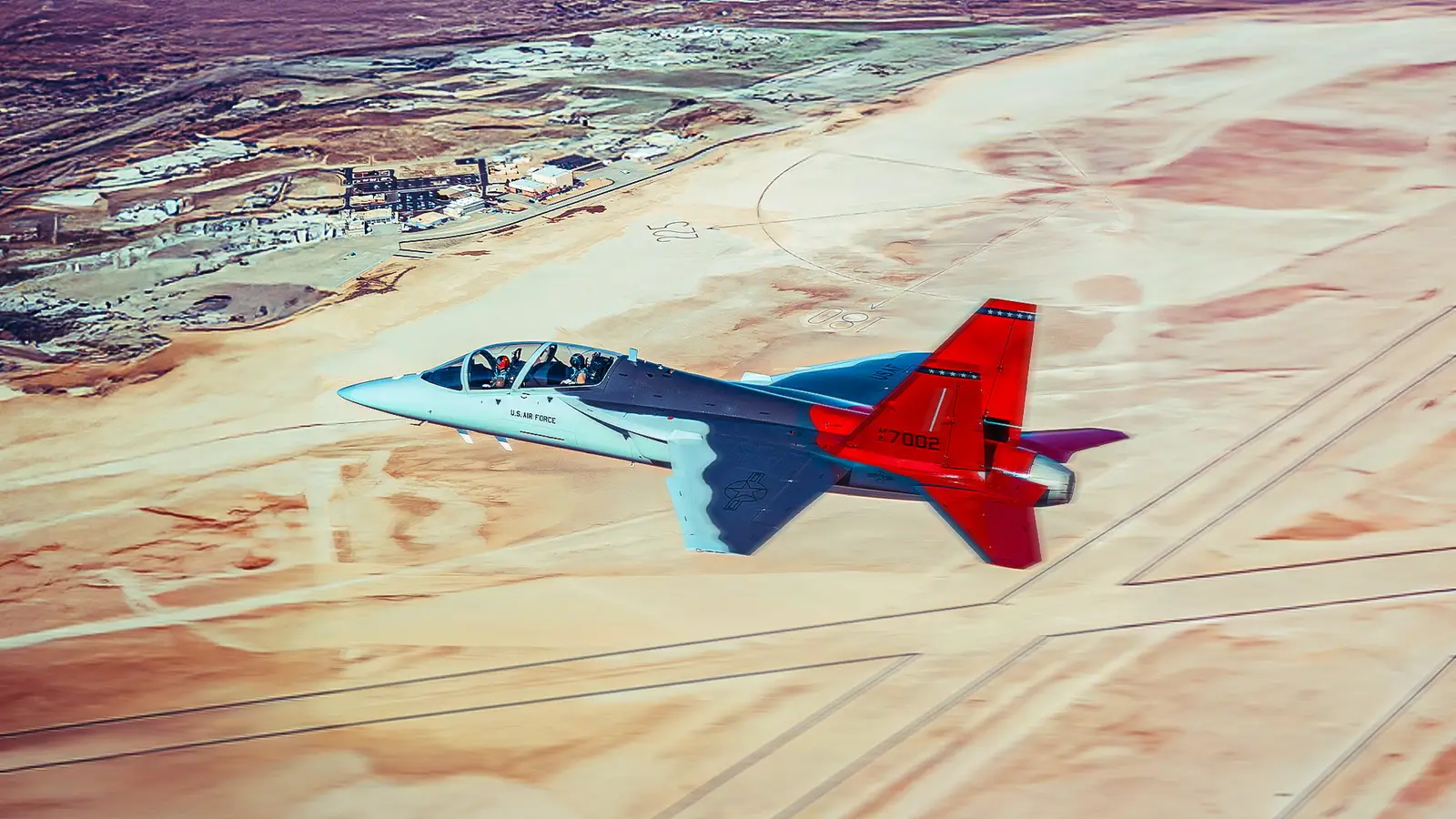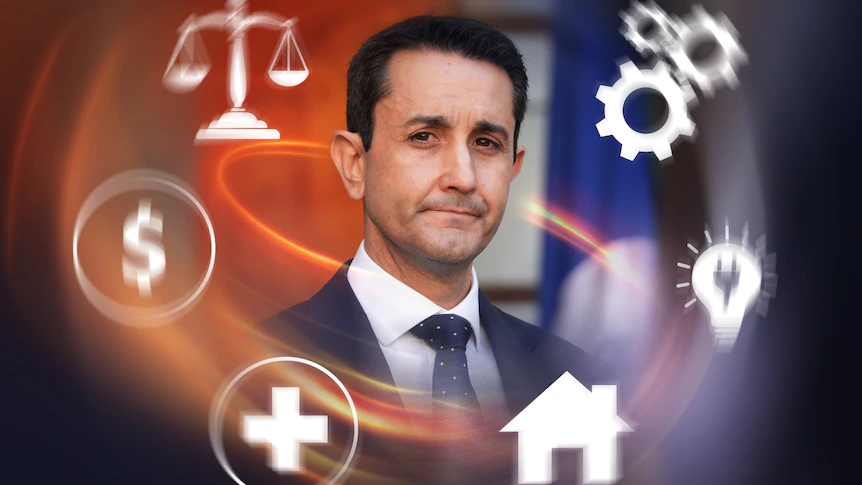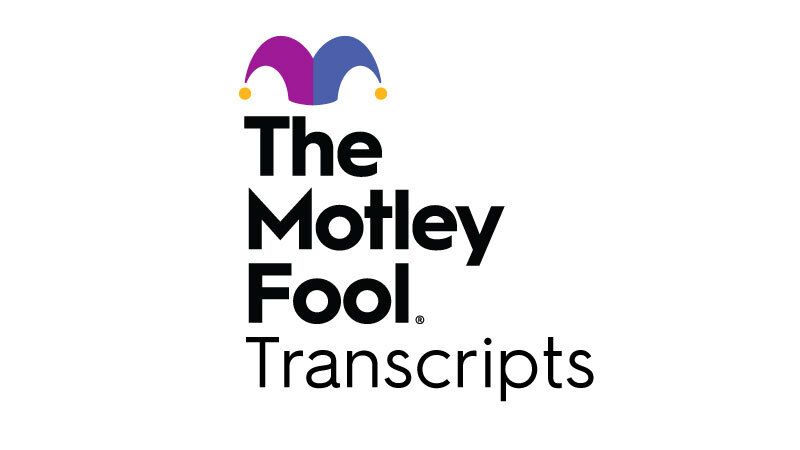Copyright Simple Flying

The Boeing, SAAB jointly made T-7A Red Hawk will bring a new era in fighter jet training to the United States Air Force. The modernized jet trainer brings modular systems architecture, lower maintenance, superior technology, and triple the thrust of the outgoing T-38 Talon. The initial contract calls for 351 T-7s at a cost of $9.2 billion to the USAF, but Boeing is targeting total global sales closer to 3,000 units. The T-7A was designed and built specifically with training pilots for fifth- and sixth-generation fighter jets in mind. The aircraft has embedded training software and can even link with simulators to enhance training evolutions in a moment’s notice. The dramatically higher thrust-to-weight ratio of the GE F404 turbofan gives high-G and high-angle-of-attack handling much more akin to a modern fighter than the antiquated Northrop T-38. The Red Hawk Overtakes The Talon Brigadier General Matthew A. Leard, director of plans, programs, requirements, and international affairs at Air Education and Training Command, told Air & Space Forces Magazine “The main thing that we’re focused on with T-7 right now is we’ve got to get that airplane.” The fly-by-wire avionics, superior aerodynamics, and excellent instructor seat all make training safer and more effective than could ever be achieved in the T-38. That means that the USAF can take jet training in the Red Hawk to a whole new level. Instead of focusing simply on the foundational skills of handling a fighter, tactical training can hone decision-making and systems skills from much earlier on in the training pipeline. The T-7A benefits from six decades of advances in every aspect of aircraft design, from avionics to materials, powerplants, as well as aerodynamics. The Red Hawk can outperform the Talon and use less gas while it does it, as well as spend less time in the hangar with a smaller maintenance bill each time it does make a visit. The comprehensive systems improvements make the T-7A the right airframe to succeed the iconic T-38. The Talon was built to train Cold War fighter and bomber pilots using the best technology of its era. The jet served valiantly since it entered service in 1961 as a trainer and even went on to become an integral part of more advanced missions like the aggressor training with the US Navy’s Top Gun school. NASA also flies a small fleet of chase planes that escorted the space shuttle in its time and now serve as its experimental aircraft. The Red Hawk was officially announced in 2018 and will bring the fighter training of the USAF into the 21st century, preparing future aviators for the battlefield of tomorrow. The software aboard the T-7A can simulate a wide range of complex tactical scenarios without the need for physical equipment like simulated weapons, threats, and other training devices. Redefining Trainer Jet Performance The single, powerful engine design of the T-7A will benefit ground maintainers with simpler maintenance, the accounting department with lower costs, and most importantly of all, the aircrew with a high-performing trainer. Although the T-7A is not supersonic like the T-38, it can go right up to the edge of Mach 1. That engine, the GE F404, is the same one used by the US Navy’s F/A-18E/F Super Hornet strike fighters. That means it delivers an excellent representation of how frontline fighter jet engines perform. The powerplant’s established supply chain and commonality shared with another Boeing airframe mean that it is also a simpler and less costly engine to procure and maintain. Teaching the skill of flying supersonic in a modern fighter is no longer as high a priority as it is to teach pilots how to manage systems in combat scenarios, aka how to “fight” their aircraft. To fight an airplane means more than handling the controls well; it is to know exactly how and when to push the plane or back off, depending on the tactical conditions. That isn’t solely about speed and maneuvering, but also about fuel management, weapons and sensor employment, plus the increasing importance of leveraging data-link in aerial engagements to gain advantage. The era of fifth- and sixth-gen fighters equipped with advanced computer-aided systems means that breaking the sound barrier is not the challenge that it once was. That minimizes the relevance of supersonic performance in a trainer jet, but the abundance of thrust is useful for learning maneuvering techniques and for adding a safety buffer that reduces the risk of losing control of the airplane. Ground-Based Training System (GBTS) The T-7A’s integration with Ground-Based Training Systems (GBTS) is how the USAF integrates a jet with a suite of advanced simulators and training devices on the ground to maximize its training. The GBTS uses cameras on flying T-7As to create immersive, complex, and cost-effective training environments in simulators on the ground. Instead of only relying on real aircraft for training, the GBTS allows the USAF to replicate realistic scenarios on the ground. The GTS can replicate the sensation of G-forces in addition to the 8K visual environment. The simulators free up live flight time for more critical lessons. The USAF plans to procure 46 of these simulators alongside the fleet of Red Hawks. The primary goal of the GBTS is two-fold: to allow students to perform more repetitions of flight training and gain a stronger muscle memory and familiarity before stepping into a real cockpit, as well as to allow for a safe environment to emulate dangerous, high-threat environments. The incredible fidelity of the GBTS is a significant training value enhancement for the pilots once they get into the seat of a T-7A, as they’ve already seen it all before. Live, Virtual, And Constructive (LVC) Integration Live, Virtual, and Constructive (LVC) integration is a training methodology that combines real-world platforms (Live) with ground-based simulators (Virtual) and computer-generated forces (Constructive). The technology has steadily evolved since the 1980s to create complex, highly realistic, and scalable training environments that will be key to the T-7A’s training value. For the T-7A Red Hawk, LVC integration transforms pilot training by connecting a live T-7A with the extensive GBTS and computer-generated entities like hostile forces and other threats. Linking with artificial Intelligence (AI) controlled hostiles and others controlled by students or instructors in simulators on the ground can combine to create a large-scale scenario on any training flight. A T-7A in the air can even join a multi-domain simulation with ground and naval assets for a student to train as a Joint Terminal Attack Controller (JTAC). The same training can be done in a ground GBTS simulator. There is even the potential to simulate next-generation threats based on the construction of near-peer adversary platforms that may emerge on the battlefield of tomorrow. The USAF Goes Direct To Jets The exceptional promise that the T-7A brings to the table for future training in the USAF has even brought up the possibility of skipping interim training platforms that currently exist. Specifically, the T-6A Texan II, which is the mainstay of pilot training for all US Armed Forces pilots and weapons officers, is on the chopping block. The Red Hawk has so much training capacity that the aging fleet of T-6As may no longer be needed as the foundational aircraft for flight training. The Red Hawk’s direct predecessor, the Talon, is 60 years old now; meanwhile, the Texan II is already at the 20-year mark. The procurement of the Red Hawk will last until the 2030s to reach full fleet capacity, and the turboprop Texan II will be even more antiquated by that time. In the 2020s, the advance of defense technology is increasingly exponential, and the need for rapidly upgradable and modular training platforms is crucial. As the baseline maintenance needs of the T-6A become more costly and complex to sustain with age, the T-7A may become the most effective and efficient platform to train the USAF’s aircrews of the 2030s. A fleet-wide upgrade to modernize the systems of the T-6A would be a costly endeavor, but still yield a lower capability training craft. General Leard told Air & Space Force Magazine: “Is there a way to bridge into the T-7 off the bat, and get to those competencies earlier and for everyone? [That] is really what we’re looking at. … It would greatly simplify the pipeline if we were able to do that.” The USAF even sent ten student pilots in August 2025 to the International Flight Training School in Italy, which uses the T-346A, an advanced jet trainer more like the T-7A than the T-6A. The leadership of the Air Force is leaning toward cutting back on T-6A training more and increasing the T-7A’s role in the making of future aircrew. Red Tails: A Living Legacy Alongside all the trailblazing technology and future focus encapsulated by the Red Hawk is a legacy of bravery and daring. The namesake for the new jet trainer is derived from the “Red Tails” of World War II, or the Tuskegee Airmen. Distinguished by the red-panted tails of their P-51 Mustang fighters, the 332nd Fighter Group and 100th Fighter Squadron were among the finest squadrons of the US Army Air Corps. The Tuskegee Airmen were awarded a Distinguished Unit Citation for one mission over Berlin, when its pilots shot down three German Me-262 jet fighters. The two squadrons were also collectively awarded the Congressional Gold Medal in 2007 for their exemplary service. The T-7A’s name and red tail livery were selected in honor of their courage and sacrifice.



